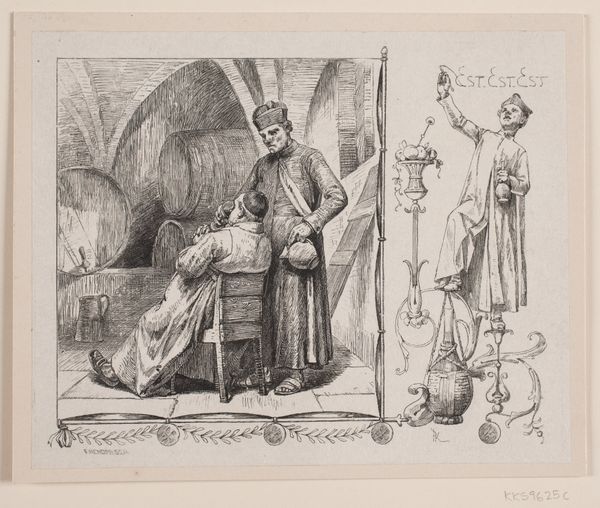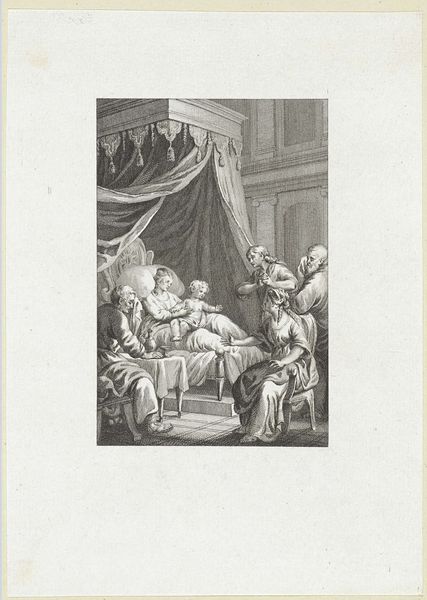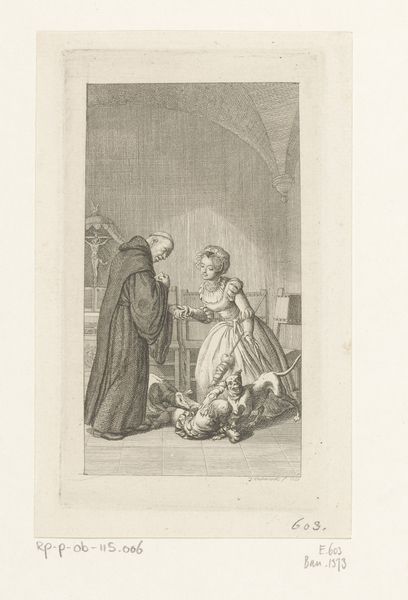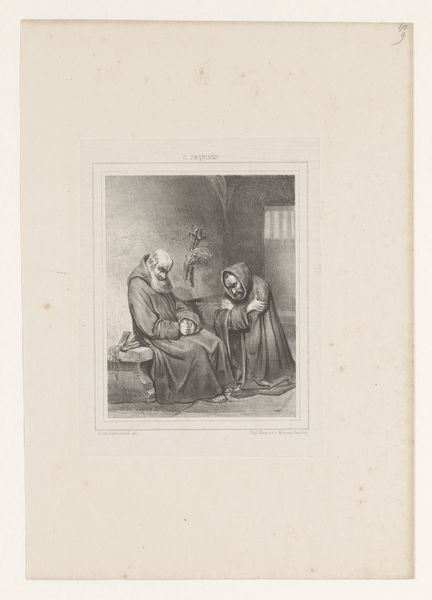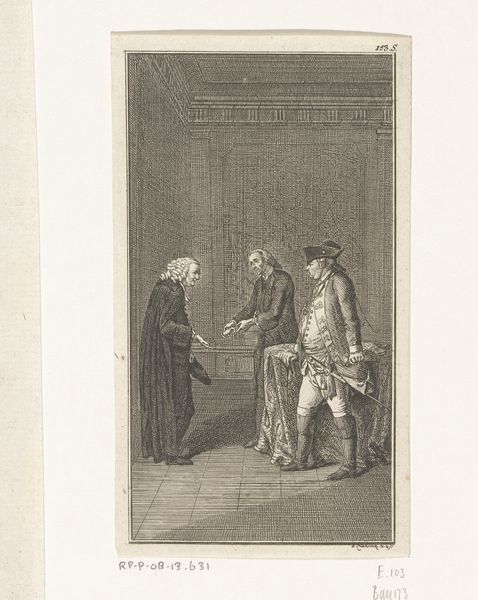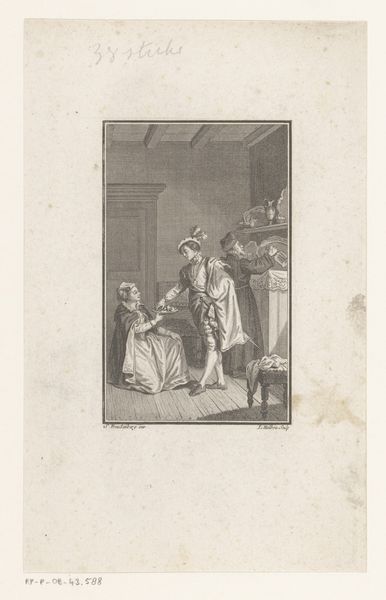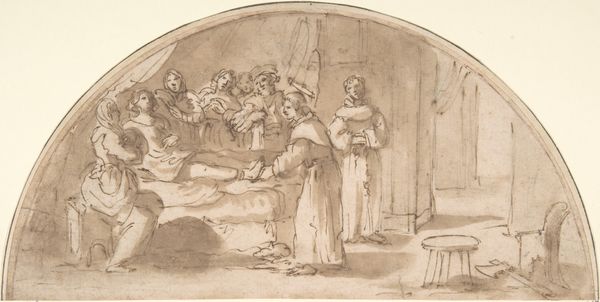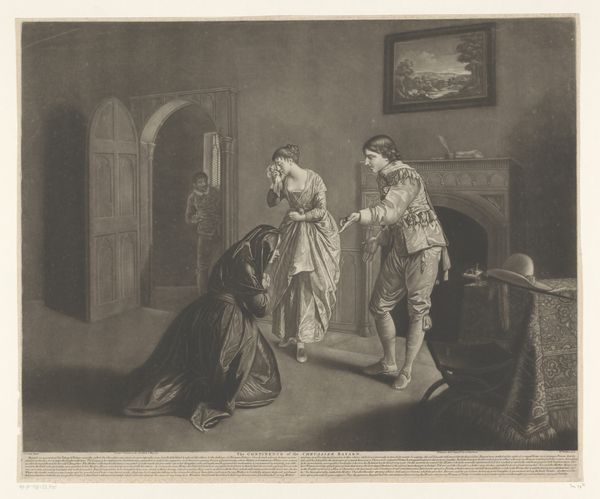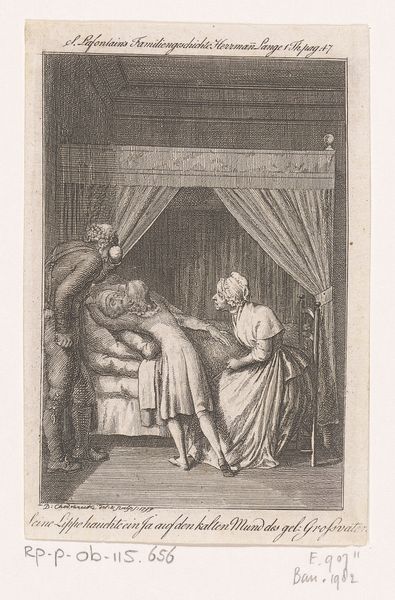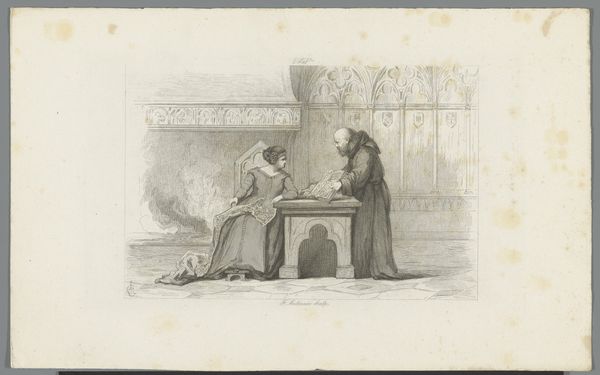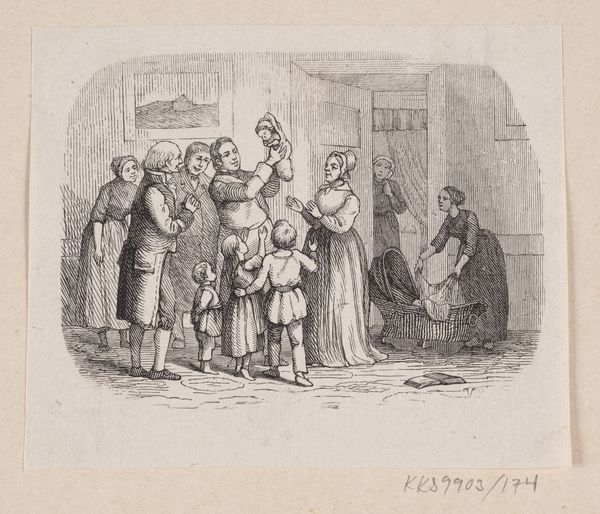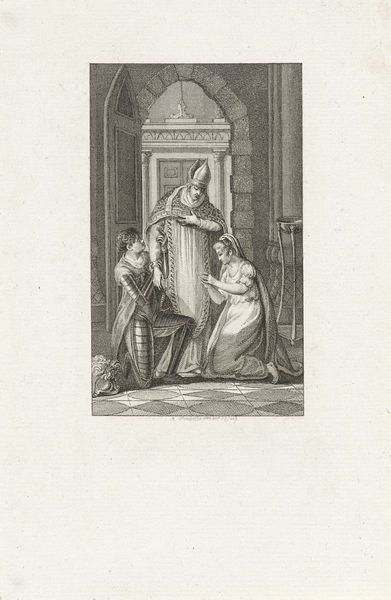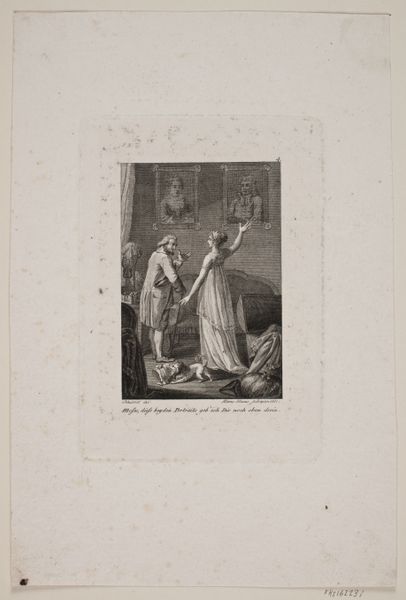
drawing, paper, ink
#
portrait
#
drawing
#
narrative-art
#
baroque
#
paper
#
ink
#
genre-painting
Dimensions: height 162 mm, width 206 mm
Copyright: Rijks Museum: Open Domain
Curator: This ink drawing on paper, attributed to Matthijs Balen, circa 1694 to 1766, is titled "Arts en zieke vrouw, met mogelijk een bediende," which translates to "Physician and sick woman, possibly with a servant." Editor: My initial reaction is one of muted melancholy. The gray tones, the slumped figure in bed, the expressions of concern—it evokes a very quiet kind of sorrow. Curator: I'm drawn to the dynamic between the three figures depicted, specifically how it can reveal disparities in access to healthcare. The central figure holding what appears to be a urine flask symbolizes the physician’s authority but simultaneously highlights the patient's vulnerability. We should ask ourselves how gender and class intersect here: is she receiving adequate care, or is her well-being secondary to other social or political considerations? Editor: Absolutely, I immediately noticed that flask. Its prominent placement and the way it's held almost reverentially speak to the perceived power of medicine—and the desperation for a cure. For centuries, uroscopy held significant weight, and the flask became a potent symbol of diagnosis and hope. It signifies a desire to interpret the body through visible signs, searching for underlying truths. Curator: Considering historical context, it's interesting how the very idea of “the physician” often meant elite white men holding a lot of structural and systemic power, whose positions frequently affected medical research, access, and care. Editor: And, too, we see hints of domesticity: the curtained bed, the concerned figure nearby, likely the servant. It points to a convergence of the personal and the societal—how illness not only affects an individual, but reverberates through their community. Each of these characters would understand their distinct role within that micro-community and respond accordingly, adhering to both personal beliefs and ingrained cultural norms. Curator: Exactly! Art offers a lens through which we can investigate intersectional themes, past and present. Examining such depictions critically opens pathways to discuss the medical and gender biases we face still today. Editor: This image allows us a glimpse into both specific details of the moment and lingering symbolic traces echoing throughout history, reminding us that those quiet stories resonate. Curator: This conversation reveals, for me, how even an incomplete or seemingly simple drawing offers space for vital exploration and conversation.
Comments
No comments
Be the first to comment and join the conversation on the ultimate creative platform.
